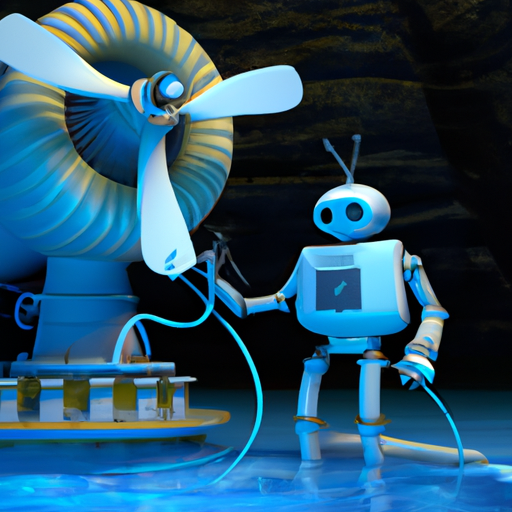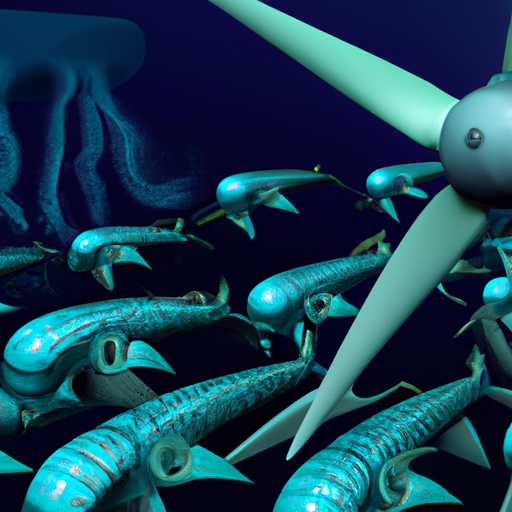Engineers develop breakthrough underwater turbine system harnessing ocean currents for continuous clean energy. The innovative design can generate enough power to support millions of homes in coastal regions. Initial trials show unprecedented efficiency levels and minimal environmental impact.

A groundbreaking advancement in renewable energy technology has emerged as engineers successfully deploy a new generation of underwater turbines capable of harnessing the immense power of ocean currents. This innovative system, developed through international collaboration between marine engineers and environmental scientists, represents a significant leap forward in sustainable energy production.
The new technology, dubbed DeepCurrent, utilizes a revolutionary design that addresses many of the challenges that have historically limited ocean current energy harvesting. The system employs a network of flexible, biomimetic turbines that can adjust their position and orientation in response to changing current conditions, maximizing energy capture while minimizing structural stress.
What sets this system apart is its adaptive artificial intelligence control system, which continuously optimizes the turbines' performance based on real-time data about current speeds, water temperature, and marine life activity. This smart technology ensures maximum efficiency while maintaining strict environmental protection protocols.
The system's innovative design includes special considerations for marine life protection. The turbines operate at slower speeds than traditional designs and incorporate specific features to prevent marine animal entanglement. Extensive environmental impact studies have shown minimal disruption to local marine ecosystems.
Initial deployment off the coast of several test sites has demonstrated remarkable results. A single array of these turbines can generate enough electricity to power approximately 100,000 homes, with the potential for scaling up to meet the needs of entire coastal cities. The consistency of ocean currents provides a reliable power source that complements other renewable energy sources like wind and solar.
The engineering team has overcome several critical technical challenges in developing this technology. The turbines are designed to withstand the corrosive effects of saltwater and extreme pressure at depths of up to 300 meters. Advanced materials and protective coatings ensure a projected operational lifespan of over 25 years with minimal maintenance requirements.
One of the most significant innovations is the system's modular design, which allows for easy installation and maintenance. The turbines can be deployed and retrieved individually, reducing downtime and maintenance costs while enabling gradual scaling of operations as needed.
The economic implications of this technology are substantial. Cost analysis indicates that once scaled up, the power generated will be competitive with or cheaper than fossil fuel alternatives. The system's long operational life and low maintenance requirements contribute to its cost-effectiveness.
The development team has also created an advanced monitoring system that uses acoustic sensors and underwater drones to continuously assess the turbines' performance and impact on marine life. This data is crucial for ongoing optimization and environmental protection efforts.
Costal communities worldwide have shown significant interest in this technology. Several countries have already begun planning large-scale implementations, recognizing the potential to reduce their dependence on fossil fuels while taking advantage of their natural marine resources.
The success of this technology has broader implications for the renewable energy sector. It demonstrates the viability of ocean current power as a major contributor to the global energy mix, potentially accelerating the transition to renewable energy sources.
Researchers are already working on next-generation improvements to the system. These include enhanced efficiency through advanced materials, better integration with existing power grids, and the development of energy storage solutions to manage power output fluctuations.
The project also includes comprehensive training programs for local communities, creating new job opportunities in installation, maintenance, and monitoring of these systems. This aspect of the project contributes to both economic development and public acceptance of the technology.
As climate change concerns continue to drive the search for sustainable energy solutions, this ocean current technology represents a promising addition to the renewable energy portfolio. Its success could pave the way for similar innovations in marine energy harvesting, further expanding our clean energy options.



